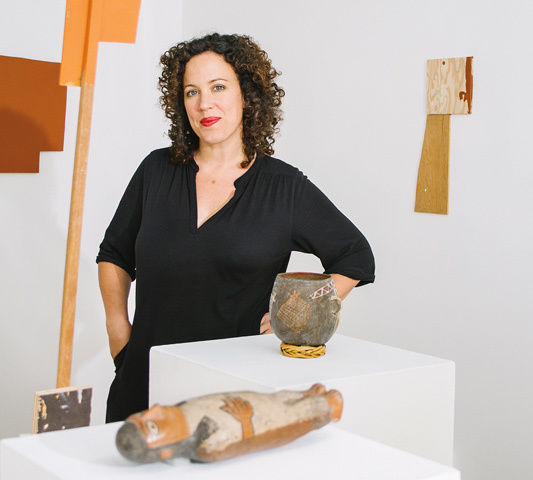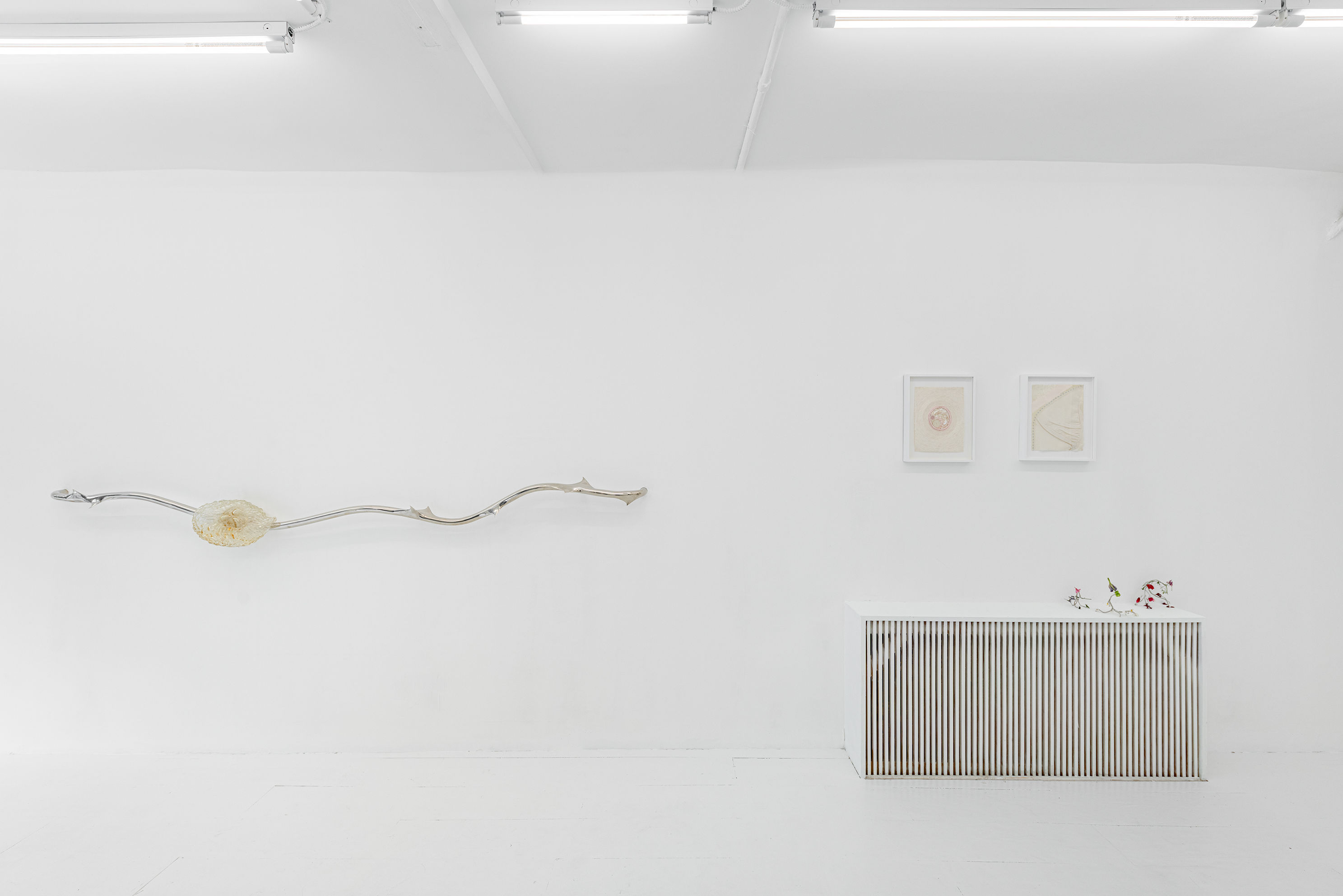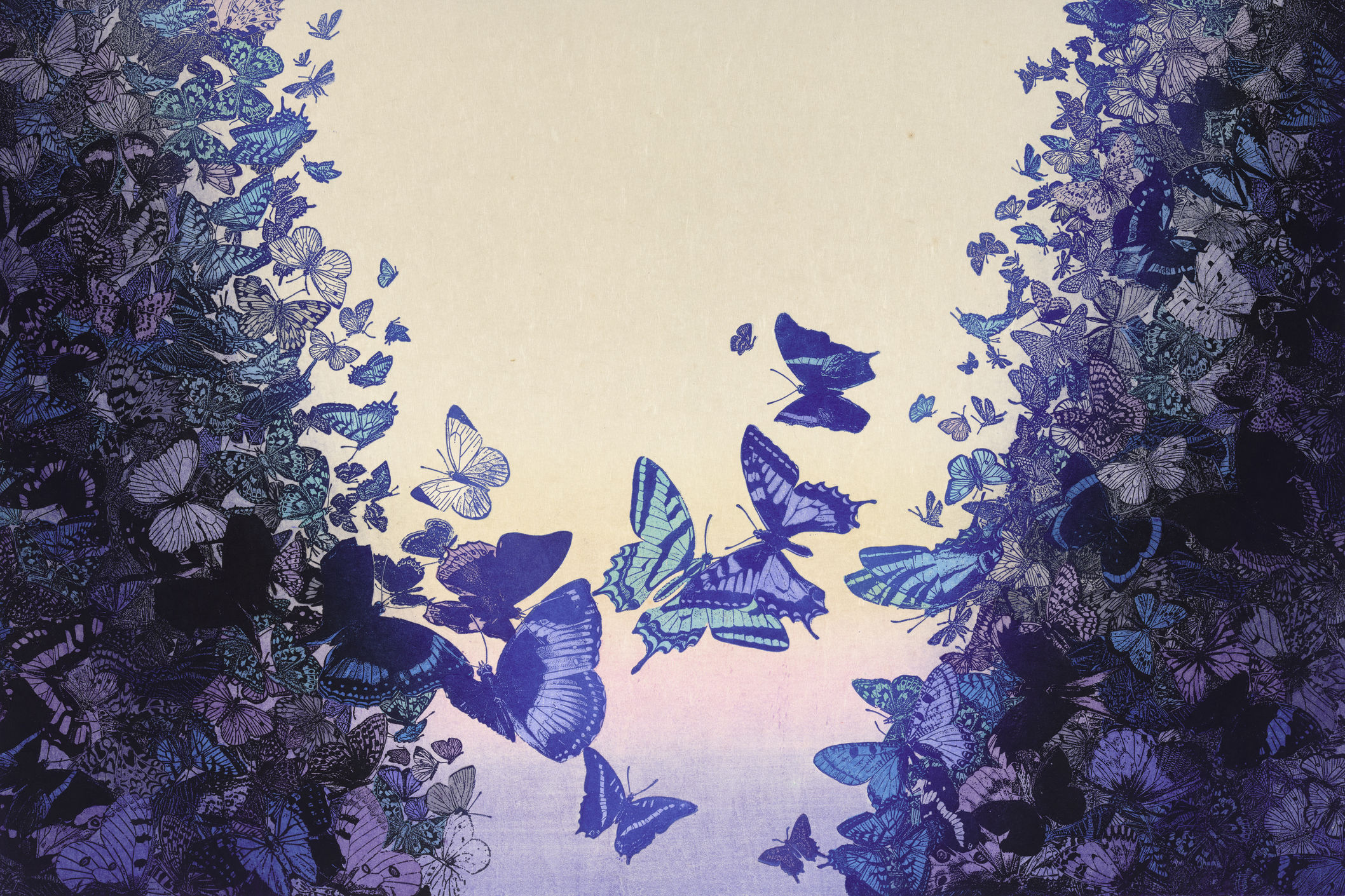Transforming Portland's Art-World Boundaries

Image: Ashley Anderson
Gallerist Amy Adams’s office stands boldly apart from the Pearl District art establishment: across the Willamette on the east side, up the stairs of the creative-retail hub at 811 E Burnside St, and at the back of her small, quiet exhibition space. The distance seems the perfect metaphor for the East Coast transplant. Since opening her space last spring, Adams has earned a reputation as an upstart whose distinctive vision knows few bounds.
On an afternoon in early summer, Adams reverently unwraps a painted, surprisingly vivid pre-Columbian ceramic piece for her July/August exhibition, a pastiche of past (centuries-old pottery) and present (new abstract sculptures from San Francisco artist Brion Nuda Rosch). Such juxtapositions of old and new are characteristic of her gallery, Adams and Ollman. “Connections appear—or you make them—when you put disparate works together,” observes the 41-year-old with a clipped East Coast cadence, her fair skin set off by a shock of dark, curly hair.
Adams’s greatest preoccupation, though, is with self-taught artists.
“There’s something very earnest about a lot of gestures you see in self-taught material,” she explains. “I think a lot of artists look to it to figure out, ‘How can I make something that’s authentic, and personal, and relevant to my life, and my culture, and my community?’”
Adams has had to address those questions herself: the fourth-generation Philadelphian was the director of that city’s folk art–focused Fleisher/Ollman gallery before her husband, a designer, got a Nike job in 2012, bringing the couple and their son west. (Fleisher/Ollman owner John Ollman lends his name to Adams and Ollman, though he doesn’t have a financial stake.)
Kristan Kennedy, the visual-art curator at the Portland Institute for Contemporary Art, says Adams brought with her not only “a sort of East Coast intensity” but also an outsider’s transregional perspective. “Amy’s gallery is connected to a broader network of spaces located in interesting pockets across the city—like Fourteen30 Contemporary in Goose Hollow and the Portland Museum of Modern Art on Albina—which have become consistent destinations to connect national and international artists’ work with emerging trends in the region.”
Adams is gradually deepening those connections. In its first year, her gallery exhibited few local artists, instead showing the likes of Milwaukee’s self-taught Eugene von Bruenchenhein and Los Angeles queer icon Vaginal Davis. So far this year, it’s shown three (although this month she showcases New York painter Katherine Bradford and Philadelphia painter Sarah Gamble). Ultimately, Adams works in a place beyond the local—neither Portland nor Philly, east side nor west.
“In some ways,” she says, “I’m just my own little microcosm.”




